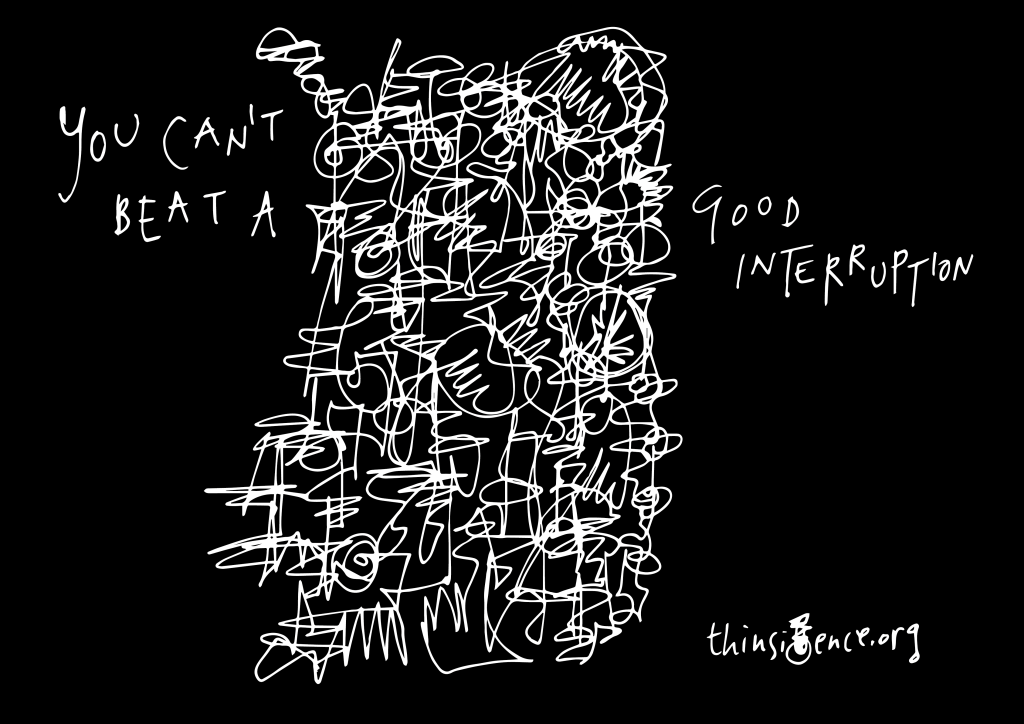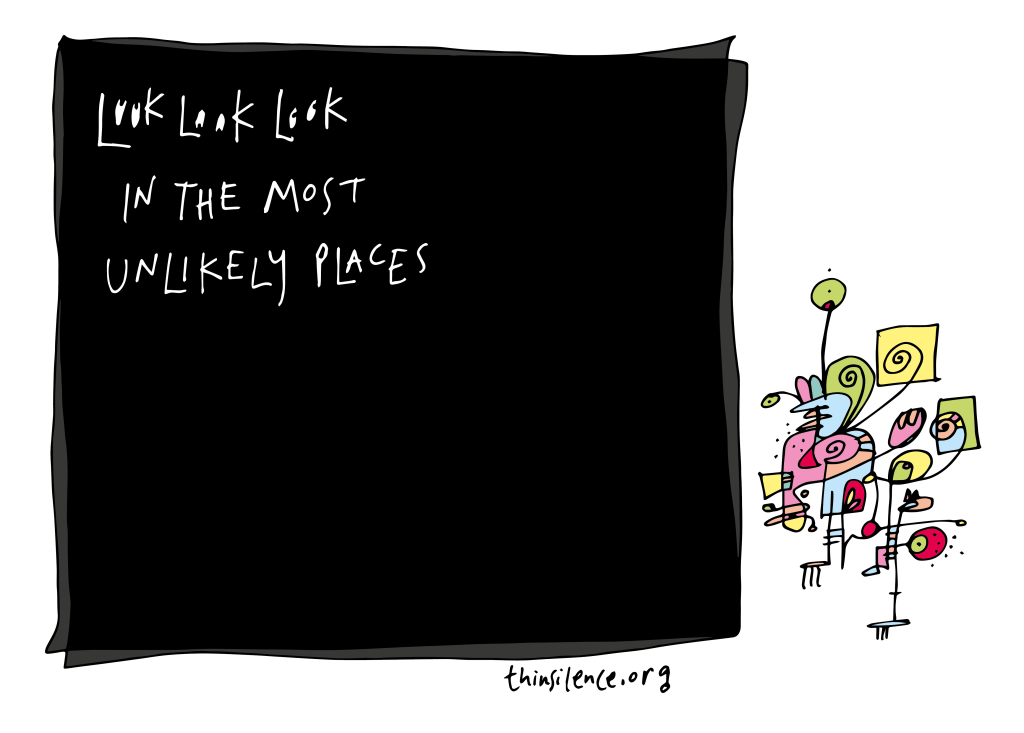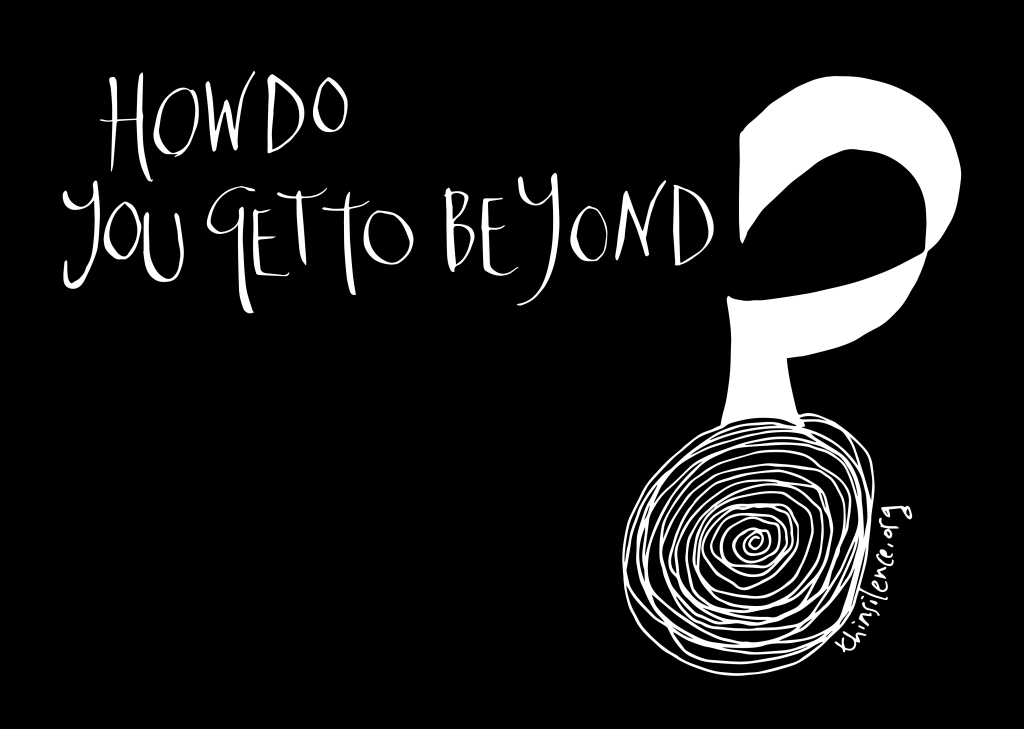To say YES YES to what we behold. To what is titles, depraved, ugly, vacant, and to what is graceful, endearing, noble – equally. It will not do to leave out the violence we cannot bear – the intimacy, the banality, the blasphemy, the holiness we cannot bear. It simply will not do.*
(M. C. Richards)
M. C. Richards is inviting us to experience cosmos and so to love all of life:
I think love is fostered by a capacity to experience cosmos.*
Yes Yes is openness.
I must appear witless to some, depraved to others, ugly and certainly sometime vacant, but don’t give up on me. Hang around a while.
It happened that on this same morning I listened to the beauty and wonder held within Marie Howe’s poem Singularity (which I will close with and invite you to experience Howe’s reading of this with a specially commissioned video).
I am arrested whilst following the words from and to
a tiny dot bringing with
is is is is is
All everything home.**
Beauty and wonder in so many ordinary lives, an expression of singularity.
From her own experience as a potter, poet and educator, Richards senses this universe speaking to her as she gives form to what she did not know until allowing it expression. She encourages us to see that in many different things this same universe will speak to each of us:
The pot, the poem, the lesson – the universe speaks in forms that tell us of our own. A vast theatre whose architecture, whose movement and sound, whose episodes have us billed in cosmic roles, speaking lives we cannot memorise for we know them for the first time consciously only when we utter them, developing character and destiny amid what scenery!*
Had I only gleaned one thought from Richards’ entire book, this would have been worth the price, and more. We have all been provided with such an opportunity, none more valuable than another – such measurements are simply lines we draw:
A symphony of soloists playing simultaneously in a composition the structure of which has been given by the composer, but the music of which, the individual sounds of which, are the choices of each performer.*
Yes Yes to all.
Yes Yes to one another.
Yes Yes to Self.
Yes Yes to our world and all its fauna and flora.
Whether composer or singularity appeals more, or both together, we will need to leave the purely functional and practical, and certainly the industrial, and touch the particular and peculiar art that is our response to being here:
Art creates images of that world that moves within the world. And it is this realm which embodies itself continuously. From day to day in our bodies. From page to page in our writing. From canvas to canvas, stone to stone, dust to dust, the pot returneth.*
From his exploring of stories and myths from thousands of years, Joseph Campbell writes for our present times:
One way or another we all have to find what best fosters the flowering of our humanity in this contemporary life and dedicate ourselves to that.^
Before all of this, though, a recalibration, a resetting, to imagine the world as one tiny expression of endless possibility within a great singularity. Within this world, your life, one tiny expression of endless possibility within a great singularity.
I will hang around to see that.
SINGULARITY
by Marie Howe
(after Stephen Hawking)
Do you sometimes want to wake up to the singularity
we once were?
so compact nobody
needed a bed, or food or money —
nobody hiding in the school bathroom
or home alone
pulling open the drawer
where the pills are kept.
For every atom belonging to me as good
Belongs to you. Remember?
There was no Nature. No
them. No tests
to determine if the elephant
grieves her calf or if
the coral reef feels pain. Trashed
oceans don’t speak English or Farsi or French;
would that we could wake up to what we were
— when we were ocean and before that
to when sky was earth, and animal was energy, and rock was
liquid and stars were space and space was not
at all — nothing
before we came to believe humans were so important
before this awful loneliness.
Can molecules recall it?
what once was? before anything happened?
No I, no We, no one. No was
No verb no noun
only a tiny tiny dot brimming with
is is is is is
All everything home
(*From M. C. Richards’ Centering.)
(**From Marie Howe’s poem Singularity quoted in Maria Popova’s Brain Pickings: Singularity.)
(^From Joseph Campbell and Bill Moyers’ The Power of Myth.)











You must be logged in to post a comment.